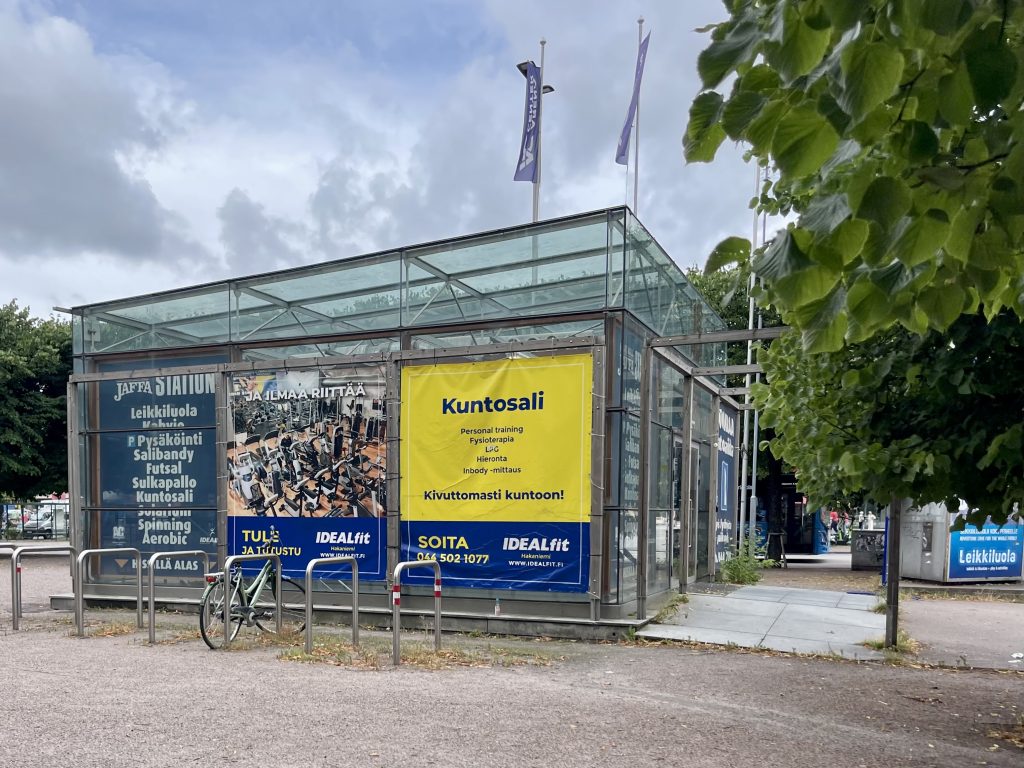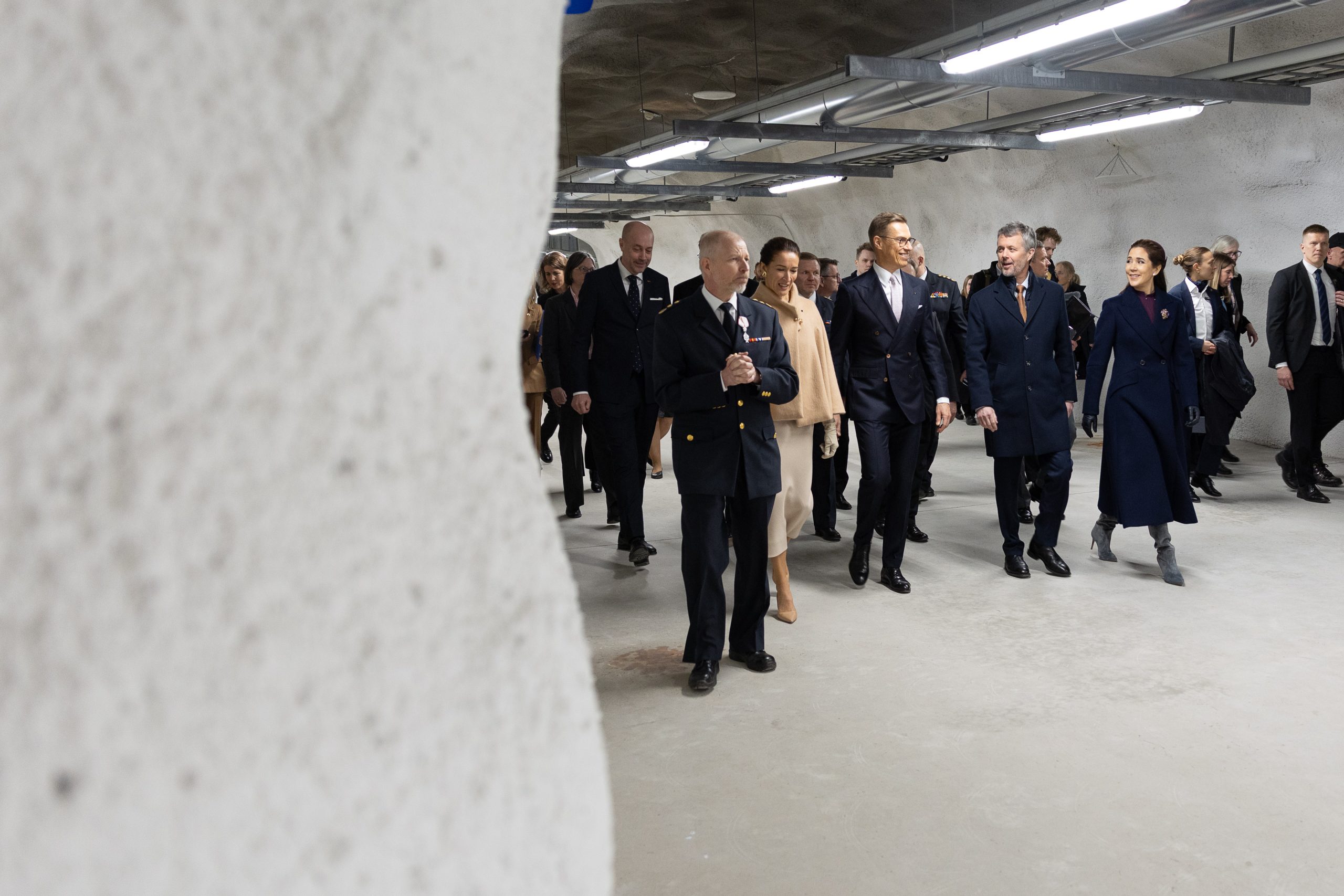The war in Ukraine has changed perceptions of security and preparedness. The coronavirus pandemic revealed the need for being prepared and taking swift measures.
Both Denmark’s King Frederik, President Zelenskyy and the Nordic cooperation ministers have visited the large civil defence shelter at Hakaniemi Square in Helsinki.
In normal times, it functions as an underground car park, sports centre, and adventure playground for children.
In a crisis, the Merihaka car park becomes a public underground shelter for 6,000 people. It provides protection against weaponry, explosions and shrapnel, shockwaves, hazardous substances and radiation.
Shelters are only a small part of Finnish resilience
Helsinki has over 5,500 shelters with space for 900,000 people. Even metro stations can serve as shelters. The number of shelter spaces is sufficient to cover both residents’ and visitors’ needs.
The National Emergency Supply Agency’s mandate
To build a crisis-resilient society so that society can function even in crises and life continues with as little disruption as possible.
The vision is called “A resilient Finland.” Preparations focus on three main scenarios: military threat, large-scale influence operations and serious disruptions to the global economy.
Risks and threats to Finnish supply preparedness are now considered more serious and concrete than earlier. In this new threat environment, Finland focuses on energy supply, food and water supply, transport and supply chains, preparedness in digital security and information supply.
Production-related economic solutions are also mentioned as necessary in the event of a serious crisis.
The bulk of the shelter system is made up of buildings that are usually used for storage or as hobby rooms, but everything can be activated within 72 hours in a crisis. In the rest of the country, the network is not as dense, and smaller residential houses generally lack shelters.
Director Heli Tammivuori welcomes visitors in a modern meeting room in a basement in central Helsinki. The National Emergency Supply Agency’s (NESA) offices are located higher up in the building but are not open to visitors. Around a hundred people work there.
You are not allowed to take photos inside. The building is located on Aleksanterinkatu, in the very heart of Finland’s economic and political centre.
Security staff checking ID cards and invitations sit behind one-way mirrored glass. Secrets are being handled here.

The NESA operates under the Ministry of Employment and the Economy and is responsible for maintaining and developing the country’s security of supply preparedness and for securing access to critical resources.
Warehouses across Finland
There are many state security warehouses in Finland. Most of them are privately owned. Their locations are not public knowledge.
Currently, Finland’s security stockpiles include nine month’ worth of grain and five months’ worth of oil products. Fertilisers, animal feed, and medical products are also stored. In addition to state stockpiles, many companies are required to maintain their own security reserves of critical raw materials for their products.
There are also EU stockpiles of medicines and protective clothing for defence against radioactive, chemical, and biological threats. In recent years, the EU has invested 350 million euro in rescEU strategic reserve capacity in Finland.
New situations with harsher crises
The Act on Securing Emergency Supply was passed in 1992 and renewed in 2008. A new law is now being drafted to better address exceptional circumstances and serious disruptions that may threaten citizens’ livelihoods, the national economy and defence.
Russia’s attack on Ukraine has been an eye-opener for the outside world. Modern warfare seems to be deliberately aimed at infrastructure and civilians.
Civilians are no longer protected by international conventions. Russia appears to have rewritten the laws of war, and 60 per cent of Russian attacks have targeted energy infrastructure, notes Heli Tammivuori.
In addition to the threat of war, infrastructure is also affected by climate change. Extreme weather and heavy rainfall can disrupt or destroy power grids and logistics.
No longer old-fashioned to stockpile
Authorities encourage households to keep food and water at home for at least three days. Rural residents are probably better prepared. It is easier to forget the importance of reserves if you live in a city with easy access to services, shops and takeaway food.
Most Finns have older relatives who remember tougher times, who save everything just in case and preserve food in jars – often to the annoyance of their heirs.

For a long time, civil protection and stockpiling were considered a kind of exaggerated prepping hysteria.
As late as 2018, some laughed at the idea of emergency preparedness. Was there really any need for stockpiles in a globalised modern world?
Then came crisis after crisis: the pandemic, Russia’s war of aggression in Ukraine, energy crises, soaring electricity prices and hybrid threats.
Now, citizens are increasingly interested in camping stoves and how to cope during a power outage. The importance of being ready is better understood.
Useful survival know-how
Finns have also been noticing a growing international interest in how they are preparing for emergencies – particularly the way government and businesses cooperate.
Private companies actively participate in voluntary work, with some 1,500 Finnish companies and organisations being involved, says Heli Tammivuori.
A functioning market and a competitive economy are considered to be the foundation for supply preparedness. But the market alone cannot always provide what is needed to maintain economic and technical core functions – and employment – if disruptions and exceptional circumstances occur.
The aim is to keep critical societal functions running as normally as possible, through cooperation between the public, private, and third sectors. Finland is proud of its strong emergency preparedness. There is even talk of Finnish preparedness know-how as an export product for other Nato countries.
Most of the country’s critical infrastructure and services are privately owned, so businesses play a significant role in emergency preparedness. This used to be known as “economic defence”. The economy still plays a major role in emergency supply preparedness.
“Finnish companies aren’t all doing all that well right now. Finland is on the way up, but progress is slow.
“The companies are still highly motivated to take part in the activities and to invest in emergency preparedness. However, the added value of voluntary preparedness must be big enough for the companies to continue to want to allocate resources for the activities,” says Heli Tammivuori.
That is why NESA focuses on five priority areas, all of which are essential in a crisis, Tammivuori explains. These are energy, logistics, digital security, food, and water.
A new Nordic relevance?
The Nordics do cooperate in this field, and there is strong political support for joint action when it comes to supply preparedness, civil crises and hybrid threats.
This summer, preparedness and security have been discussed at many events in Finland, also from regional political perspectives.
In mid-August, a conference at the Wasa Innovation Center discussed “The New Relevance of the Nordics”. The importance of infrastructure when it comes to security policy was highlighted, as were plans for a bridge connection between Vaasa and Umeå.

Centre Party MP Mikko Savola spoke of the close ties between Finland and Sweden, the countries’ shared values and integrated modern economies. It is in Finland’s interest to cooperate with Sweden on defence, foreign, and security policy, especially in times of crisis, Savola argued.
Food prevents anarchy
Finnish self-sufficiency, especially when it comes to food, is important for Savola. He is himself a farmer from the small municipality of Ähtäri in Ostrobothnia on Finland’s west coast.
The region is known as Finland’s food pantry, with extensive, high-quality production, Savola points out.
“Food is crucial for emergency supplies – both the military and the civilian population need a secure food supply.”
Savola recalls the saying that society is only a few days or meals away from anarchy.
“A Finnish food production system can reduce dependence on foreign supply chains that may be disrupted during times of war or in a crisis. When citizens are confident that food is available, social stability and the will to defend the country are better served,” says Savola.
He emphasises the role of local food production, noting that in Sweden it is more concentrated in the south. That is why he argues that Finnish Ostrobothnia can play an important role in producing food also for Sweden in case of crisis.
Opportunity for economic growth with Nato billions
All this requires transport capacity, alternative routes and upgraded roads all the way to Norway’s Atlantic ports. These could become especially important if the Baltic Sea cannot provide safe transport routes.

Savola also says regional policies are central to energy and defence industries. Nato’s 5 per cent defence budget target opens opportunities for new funding streams for security- and defence-related business projects.
Finland’s west coast is considered the safest area and should therefore be prioritised, Savola argues.
He mentions a project already underway with crucial importance for Finland’s and its allies’ supply preparedness: a new explosives factory in Pori for TNT production. Local politicians hope several billion euro will be made available for new projects to boost security and improve employment.






